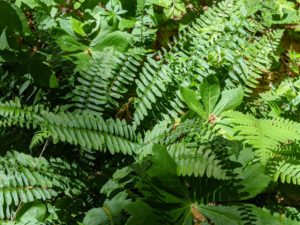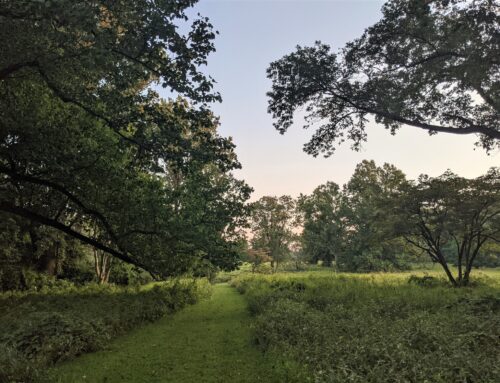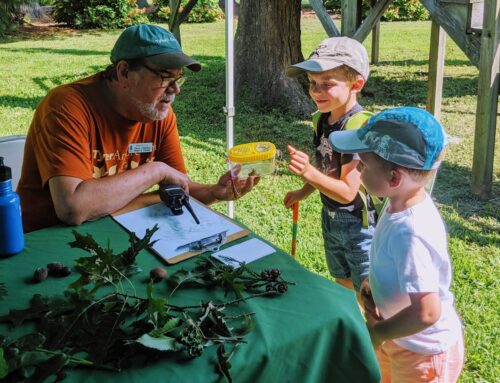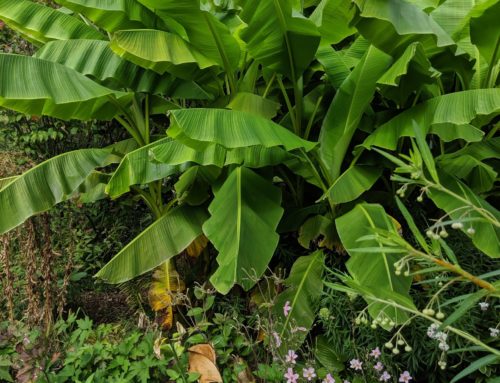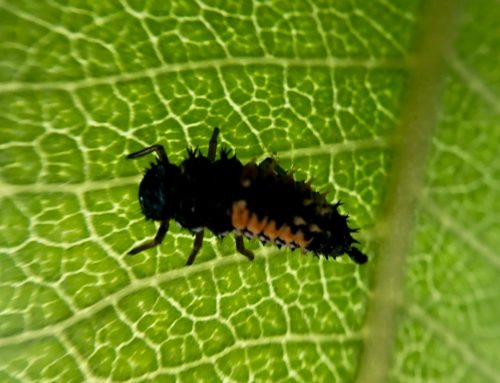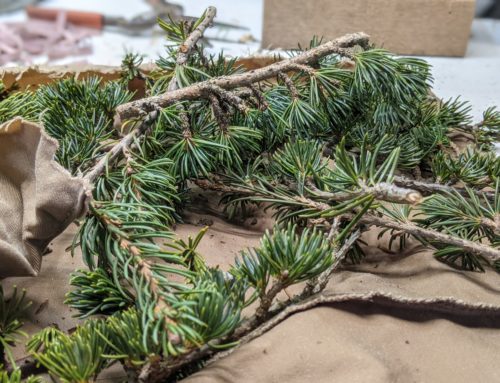The forest is an interwoven community of life, layered from the highest trees in the canopy to the deepest reaching roots in the soil. And the trees that form the backbone of that forest support that community on every level and throughout every moment of their lives – and even after they fall. As you can see from this video, whether it’s a branch dropped from a living tree or the fallen trunk of a forest giant, the life of a log continues long after the log itself.
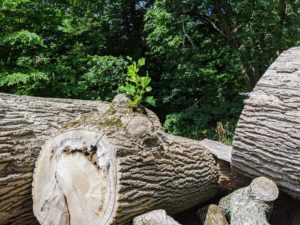
A typical tree growing in a residential neighborhood provides many benefits to the local ecology. It creates food, shelter and nesting spaces for a variety of birds, mammals and insects, especially if it is a native tree. In addition, its leaves and roots slow down wind and water, which helps control flooding and soil erosion. Trees also remove carbon from the air and replace it with oxygen.
But when a tree is felled by weather or disease, is its value lost? Often after a tree-damaging storm in a residential area, the sound of chainsaws can be heard cutting down damaged trees and clearing branches from roadways and cables. The safety of life, power and property, of course, takes top priority. Later the trunks and branches are removed and fed into wood chippers. Then the stump grinders come. After a few weeks, there is nothing left to remind us of the tree that had been, and all its ecological contributions are gone.
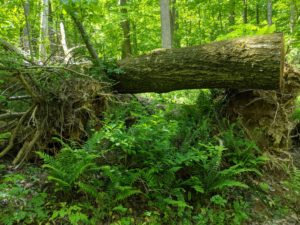
Conversely, when a tree comes down in a forest, the tree continues to support the web of life. After a tree falls, the canopy is immediately opened, allowing more sunlight to reach the forest floor. This is good for the young saplings and other plants that need sunlight to grow. Small animals such as chipmunks, rabbits and squirrels can use the fallen tree for shelter, while deer can eat the bark for food. Fungi, traveling through the air as microscopic spores, find their way to the fallen tree. As the fungi spread their microscopic filaments along deadwood, they release enzymes that break down wood.
As the decay continues, bacteria, slugs, beetles, millipedes and other organisms join in consuming the wood. This feeding exposes the wood to more moisture. The wetter the wood, the faster it decomposes. As the decaying wood starts to mix with the soil beneath it, earthworms devour it. The nutrients that the tree used to sustain itself are returned to the soil to nourish plants and other young trees. The organisms that feed on the fallen tree are eaten by other animals. These animals are in turn eaten by bigger animals, such as birds and mammals.
The time it takes for a tree/log to completely decay varies depending on climate, species and size of the pieces of the tree. Forest researchers at the U.S. Forest Service and the University of Minnesota have created a computer model that calculates how long it will take for a tree to completely decompose. Conifer species range from 57 to 124 years. Hardwood species typically take 46 to 71 years. No matter how long it takes, eventually even the mightiest of trees become soil – the foundation of the forest community.
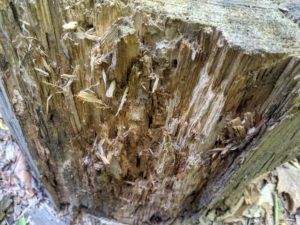
For most homeowners, allowing a fallen tree to decompose naturally is impractical unless they have a lot of unused space. However, with a few tricks, you can help to bring some of this natural cycle home. Consider cutting your logs into smaller pieces that you can allow to break down on a compost pile. Or you can chip up tree branches to be used for pathways or mulch. If the trunk can be cut to a height that is not a danger to people or property, you can leave it standing for woodpeckers or other cavity-nesting birds and animals. Even lower stumps can be a great addition to the garden. Skip the stump grinder if you have a knee-high stump and let it serve as a planter while it starts to break down! If it’s not already hollow, you can use a drill attachment to create a depression. Then you just need to add soil and some beautiful plants. That way your stump can beautify your yard and support local ecology at the same time.
Trees sustain the environment throughout their whole life cycle – from seed to soil. With nuts that nourish wildlife, leaves that produce oxygen, branches that shelter birds, flowers that feed insects and wood that decomposes to support the next generations of plants, they are truly pillars of the community. So remember, next time you are in the forest make sure to take a moment to thank a tree, whether it is a sapling or a fallen log.
